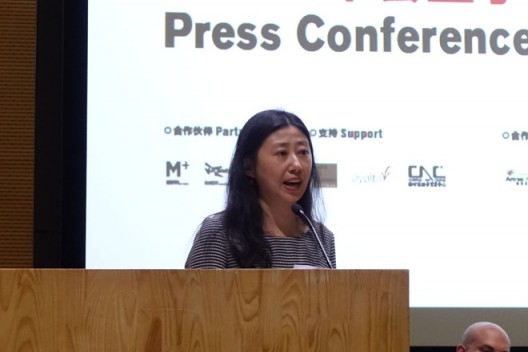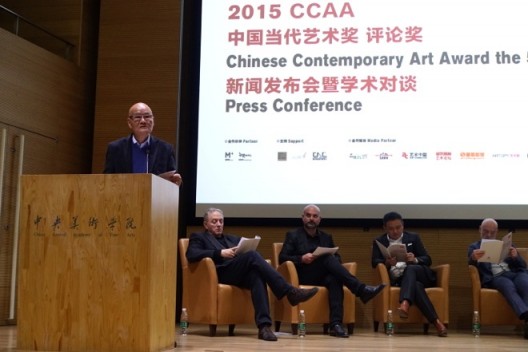The winner of the fifth CCAA Art Critic Award was announced on October 27. The award winner was Mia Yu (Yu Miao), the current academic and public projects curator at OCAT Xi’an. Her award-winning piece was entitled “From the Street to the White Box then Out Again: Practices of Intervention and Circulation in Chinese Contemporary Art”, and focused on how Chinese artists have been borrowing and involving systems of commodity, media, and art circulation in their work since the early 1990s. Yu received 10,000 Euros in funding to complete this proposal.
Twenty-six proposals in total were reviewed by a panel of jury members including Artforum International Magazine publisher Charles Guarino, Editor-in-Chief of Art Review and Art Review Asia, Mark Rappolt, Senior Curator at M+ Museum for Visual Culture and art critic Pi Li, Editor-in-Chief of Yishu: Journal of Contemporary Chinese Art Zheng Shengtian, and CCAA Founder and art collector Dr. Uli Sigg.
The China Contemporary Art Award was established in 1997 by Dr. Uli Sigg. CCAA encourages and supports outstanding artistic creation by conferring “Best Artist”, “Best Young Artist”, and “Outstanding Achievement” awards. Established in 2007, the “Art Critic Award” was created to address the lack of independent art analysis and critique in China. The award aims to create a credible platform for an objective, genuine dialogue between art creators and art writers, while re-affirming the value of independent criticism.

Mia Yu (Yu Miao)’s project summary:
From the Street to the White Cube and Out Again: Practices of Circulation in Chinese Contemporary Art
Mia Yu’s research uses “circulation” as a conceptual framework to examine the ways in which Chinese artists have appropriated and intervened in various systems of media, business and contemporary art. By tracing artists’ strategic and tactical practices through case studies, the project attempts to illustrate major shifts that have occurred from the 1990s to the present. As early as in 1991, artists in China started to appropriate advertising, newspaper, supermarket, and trade show venues as “ready-made” exhibition spaces. They saw avant-garde potential in displaying art amid the public circulation, and confronted the audience with artworks that could reconfigure these otherwise familiar spaces. In doing so, the artists assumed divergent roles of editor, entrepreneur, salesman, and manual laborer. The images of the artists also proliferated in their works during this period. As the exhibition system and the art market rapidly developed in China after 2000, the dynamics of these artistic practices gained a new urgency, evoking dialogues about the value of art created in and around the circulation in galleries, biennales, museums, art fairs and private collections. The artists who were engaged with direct social circulations in the 1990s shifted their focus to the means of circulation in the global art world. During the last five years, the younger generation of Chinese art practitioners have actively resorted to web-based and mobile-based social media to display, to promote and even to sell their works, engendering another shift in the tactical maneuvers beyond the control of the state, the market and the art world. By tracing such divergent artistic practices, the project ultimately seeks to offer a new perspective on the constantly mutating trajectories of globalization in contemporary art.





